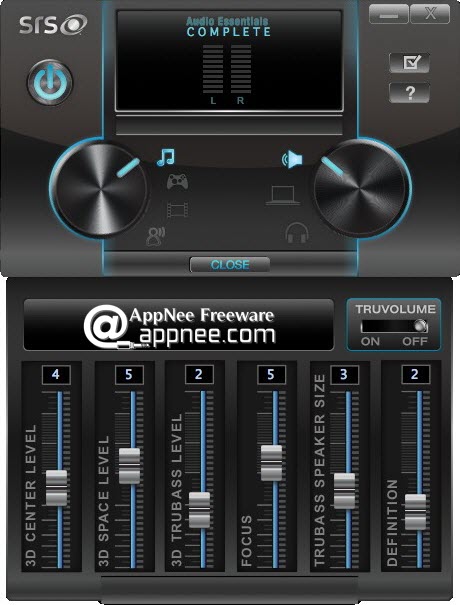The Sound Retrieval System (SRS) is a patented psychoacoustic 3D audio processing technology originally invented by Arnold Klayman in the early 1980s. (The original SRS patents are US 4866774, US 4748669 and US 4841572, which expired between 2006 and 2008. Patents may apply in other countries). The SRS technology applies head-related transfer functions (HRTFs) to create an immersive 3D soundfield using only two speakers, widening the 'sweet spot', creating a more spacious sense of ambience, and producing strong localization cues for discrete instruments within an audio mix.[1] SRS is not a Dolby matrix surround decoder but works with normal stereo recordings.


Initially Hughes Aircraft, for whom Klayman was doing acoustic consulting at the time, offered a standalone SRS audio processor,[1] as well as licensing the technology to Sony and Thomson (RCA) for inclusion in their products. In the early 1990s, Hughes sold off its non-aerospace-related holdings, and a group of entrepreneurs formed SRS Labs to acquire the SRS technology.
Many TV sets employ built-in SRS to make their built-in audio systems sound 'bigger'. An article in the November 1994 issue of Consumers Digest magazine tested several SRS-equipped sets from Sony and other manufacturers and concluded that the circuit was essentially a gimmick in these products due to their small, close-set speakers and low-wattage amplifiers. SRS is not a panacea for audio systems that are marginal to begin with; it works best with full-range, high-fidelity sound reproduction.
Control Srs Audio Settings Right-click on SRS-XB12 in Devices and select Sound settings from the menu that appears. Confirm SRS-XB12 Stereo on the Sound screen. If there is a checkmark (green) on SRS-XB12 Stereo , proceed to step. This setting is application specific so you will have to search for it in application preferences/options. For example, in Winamp the setting is located in Preferences-Playback-Allow 24bit. If you have Windows Vista/7/8/10 then you have to enable 24 bit output in Windows Sound settings or Realtek HD Audio Manager as well.
The company (publicly traded on NASDAQ under the symbol SRSL after a 1996 IPO) since developed or acquired several additional audio technologies, including SRS Headphone, TruSurround XT, TruBass ('psychoacoustic bass enhancement to enable deeper, natural bass of audio source material to be perceived over small speaker drivers'), FOCUS ('sound-image elevation used in combination with SRS to create a large sound image', originally conceived for in-car listening), SRS Virtual Surround, Circle Surround, SRS Wow (an audio-enhancement suite made up of SRS 3D 'wide stereo imaging and nonfatiguing headphone listening mode', Focus and TruBass[2]) and SRS Wow HD, Dialog Clarity, and VIP, most using psychoacoustic principles similar to those employed by the SRS technology. SRS or one of its derivatives is offered in products from a wide range of professional and consumer audio manufacturers as well as in SRS's own small stable of products. The company derives most of its revenue from licensing its technologies, which it does in both silicon and software form.
SRS Wow was implemented in many devices such as music players, and in software such as Microsoft's Windows Media Player for playing sound on a computer.[3]
- Tap Settings - Sound - Sound Effect to select the sound effect. Depending on the music, the LIVE SOUND or EXTRA BASS effects may not be so noticeable. Listening to music of a device via BLUETOOTH connection.
- Hp laptop sound settings, Jun 10, 2020 The problem is now with the settings of the specific program - it might be listening to the wrong microphone, or perhaps its input volume is too low.
- Audio/Video Equipment Management System NetClass PRO AV Control. Support@srs.kiev.ua; srs.supportteam@gmail.com.
In 2012 DTS, Inc. acquired the business of SRS Labs, including over 1,000 audio patents and trademarks.
Enable Srs Premium Sound

See also[edit]
References[edit]
Hp Dc7100 Drivers Windows 7
- ^ abAudio Basics newsletter, vol 10, (double) number 5 and 6, May and June 1991, pp2-3
- ^SRS Labs Wow technology explained, 14 November 2005
- ^Microsoft: Changing bass, stereo and other audio effects in Windows Media Player 'You can enhance low-frequency and stereo sound performance by turning on SRS WOW effects'.

External links[edit]
- Wayback Machine archives of SRS Web site for many dates.